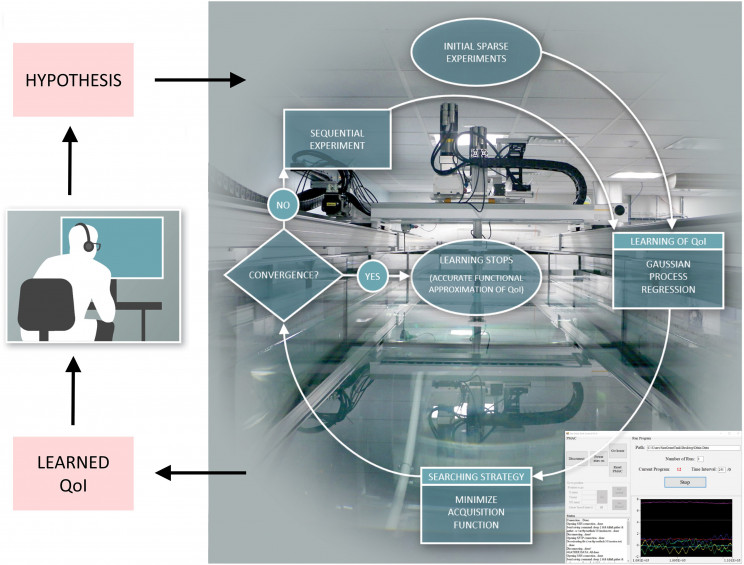Fluid dynamics scientists beware, a new robot on the scene may replace you. Alternatively, another perspective is that this robotic system will hugely assist scientists in that field.
Researchers from MIT and Brown University in the U.S., and the École Normale Supérieure de Rennes in Bruz, France, engineered a robotic system that has carried out roughly 100,000 experiments on fluid dynamics. The most impressive part of this information is that it managed to do so in just one year.
RELATED: RESEARCHERS DEVELOP SOFT ROBOT THAT CAN WITHSTAND BEING CRUSHED BY A HUMAN FOOT
This is about as many experiments on the complex and hard-to-predict fluid dynamics that have been carried out to date by labs around the world.
What does this ‘robot scientist’ do?
It’s called the ‘Intelligent Towing Tank’ (ITT) and it represents a big shift towards experimental research, where robots and humans work alongside each other.
This will enable more complex research questions to be answered. So far, these questions have been too impractical for humans to research alone.

There are a number of other ‘robot scientists’ that already exist in the scientific research world. Some carry out experiments on chemical reactions and modifications, others generate new hypotheses for functional genomics, or test malaria drugs. There’s also the DARPA-funded computer that can read tens of thousands of papers to synthesize a possible hypothesis.
The ITT was created by Dixia Fan from MIT and her colleagues, to carry out tests in water flow and dynamics.
The ITT collected data from on vortex-induced vibration. It was able to do so as it is a part-robot, part-computer system that induces forced vibration in a water tank. The ITT then carries out a learning algorithm on already-known data in order to predict the following numerical target.

From this target, the ITT then decides whether speed, amplitude, or frequency will be investigated by the robot. It carries on testing new hypotheses until the computer predicts the same quantity multiple times in a row. Then the learning process stops and the ITT collects its data.
Impressively, the ITT was able to explore eight different parameters, and every two weeks was able to perform the equivalent experiments a Ph.D student would usually carry out.




![Buildbox Free - How To Make 2D Platformer Game [PART 1]](https://www.danielparente.net/info/uploads/sites/3/2020/01/Buildbox-Free-How-To-Make-2D-Platformer-Game-PART-150x150.jpg)